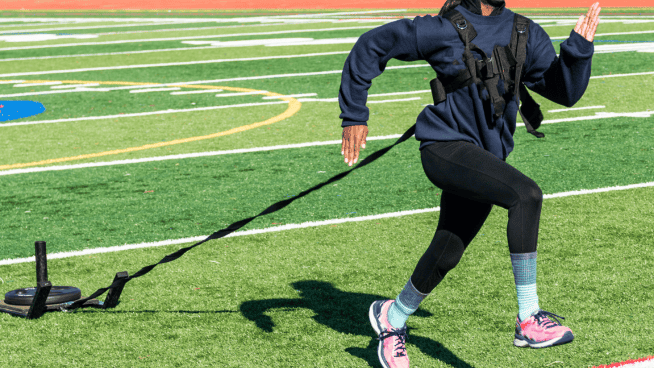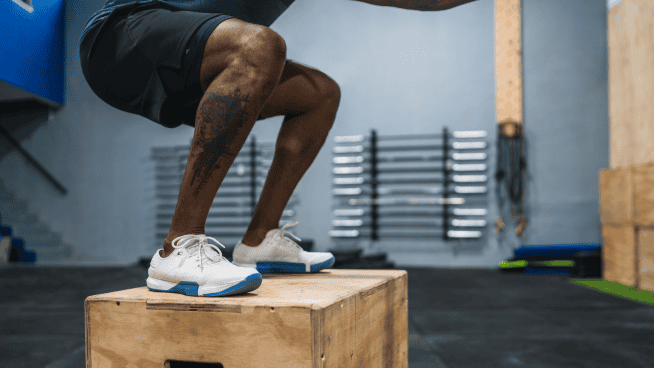Coaches Can Maximize the Impact of Their Feedback by Saying Less
Swedish psychologist Anders Ericsson said that deliberate practice (meaning practice that maximizes learning) requires certain elements. One of those crucial elements is immediate feedback.
Now, this doesn’t necessarily mean it has to be verbal feedback. Feedback can also come from a well-designed environment and task that provides feedback to the athlete and allows for implicit learning.
In fact, it has been suggested that more verbal feedback from a coach doesn’t equate to increased performance or learning. In reality, less frequent verbal feedback may increase learning transfer and retention.
This is why I believe that we as coaches should strive to say less, while our training environments should say more. Create an environment that maximizes feedback.
The other major area of feedback I’ve worked on is making my athletes give me feedback and get used to having self-reflection.
Why?
Coaches can never see or feel through the athlete’s eyes. Only the athlete can experience the problem from their perspective, so in a way, it’s inappropriate for coaches to give explicit feedback without input from the athlete.
Remember that an athlete’s movement is the result of what they sensed and perceived in that moment. They selected a movement solution they thought would be correct, even if you as a coach think they chose poorly. So you must ask how they arrived at that solution.
In the video below, you see some aspects of our movement training, but what you don’t see on video is the athletes analyzing each rep, talking about how they’d do it differently, describing what they were thinking, and formulating a game plan for their next rep.
I have no doubt this process of self-evaluation, communication and teammate feedback will carry over to games when athletes are on the sideline or huddle, and communication of what they saw, felt and perceived is vitally important for success.
Athletes are used to being told what to do and how to do it; but in our environment, we give them the microphone and allow them to define many of those questions.
We strive to reduce the amount of telling, i.e., “Don’t do that, do this.”
Instead, it’s, “What did you feel? Why did you do that? What did you see there?”
I didn’t always think like this, but as I began asking for more feedback from my athletes, my tune changed. For example, I’d ask 10 athletes what they thought during acceleration. The responses I received included:
- “Power”
- “Extend”
- “Explode”
- “Launch”
- “Patience”
- “Project”
- “Push”
- “Slow rise”
Taken aback a bit by these responses, I then asked what they think when I cue things like “project,” “push,” “rhythm,” “sink,” etc. I was surprised to find that many of my athletes visualized something completely different than what I visualized when I cued with those terms.
It was then that I realized I needed to put the ball in their court and make sure I wasn’t falling back on what I perceived as a magical cue or analogy.
Our job as coaches is to facilitate the learning process of our athletes—NOT to be a dictator in this process. We need to coach with the athlete. It is, after all, their performance we are talking about, so they should have some say in the process.
Ask for their input. Try letting them choose spacing, angles, size of environment, number of players, difficulty and the times that they receive feedback.
In the video below, the athletes controlled things like where the “gates” were located, where they started, which “gate” to run through, when they received feedback, and allotted time to complete the task.
Talking more shouldn’t be equated with doing more for coaches. Taking a step back to consider your training environment. Eliciting more feedback from your athletes can often have a more powerful effect than regurgitating the same coaching cues for the thousandth time.
READ MORE:
RECOMMENDED FOR YOU
MOST POPULAR
Coaches Can Maximize the Impact of Their Feedback by Saying Less
Swedish psychologist Anders Ericsson said that deliberate practice (meaning practice that maximizes learning) requires certain elements. One of those crucial elements is immediate feedback.
Now, this doesn’t necessarily mean it has to be verbal feedback. Feedback can also come from a well-designed environment and task that provides feedback to the athlete and allows for implicit learning.
In fact, it has been suggested that more verbal feedback from a coach doesn’t equate to increased performance or learning. In reality, less frequent verbal feedback may increase learning transfer and retention.
This is why I believe that we as coaches should strive to say less, while our training environments should say more. Create an environment that maximizes feedback.
The other major area of feedback I’ve worked on is making my athletes give me feedback and get used to having self-reflection.
Why?
Coaches can never see or feel through the athlete’s eyes. Only the athlete can experience the problem from their perspective, so in a way, it’s inappropriate for coaches to give explicit feedback without input from the athlete.
Remember that an athlete’s movement is the result of what they sensed and perceived in that moment. They selected a movement solution they thought would be correct, even if you as a coach think they chose poorly. So you must ask how they arrived at that solution.
In the video below, you see some aspects of our movement training, but what you don’t see on video is the athletes analyzing each rep, talking about how they’d do it differently, describing what they were thinking, and formulating a game plan for their next rep.
I have no doubt this process of self-evaluation, communication and teammate feedback will carry over to games when athletes are on the sideline or huddle, and communication of what they saw, felt and perceived is vitally important for success.
Athletes are used to being told what to do and how to do it; but in our environment, we give them the microphone and allow them to define many of those questions.
We strive to reduce the amount of telling, i.e., “Don’t do that, do this.”
Instead, it’s, “What did you feel? Why did you do that? What did you see there?”
I didn’t always think like this, but as I began asking for more feedback from my athletes, my tune changed. For example, I’d ask 10 athletes what they thought during acceleration. The responses I received included:
- “Power”
- “Extend”
- “Explode”
- “Launch”
- “Patience”
- “Project”
- “Push”
- “Slow rise”
Taken aback a bit by these responses, I then asked what they think when I cue things like “project,” “push,” “rhythm,” “sink,” etc. I was surprised to find that many of my athletes visualized something completely different than what I visualized when I cued with those terms.
It was then that I realized I needed to put the ball in their court and make sure I wasn’t falling back on what I perceived as a magical cue or analogy.
Our job as coaches is to facilitate the learning process of our athletes—NOT to be a dictator in this process. We need to coach with the athlete. It is, after all, their performance we are talking about, so they should have some say in the process.
Ask for their input. Try letting them choose spacing, angles, size of environment, number of players, difficulty and the times that they receive feedback.
In the video below, the athletes controlled things like where the “gates” were located, where they started, which “gate” to run through, when they received feedback, and allotted time to complete the task.
Talking more shouldn’t be equated with doing more for coaches. Taking a step back to consider your training environment. Eliciting more feedback from your athletes can often have a more powerful effect than regurgitating the same coaching cues for the thousandth time.
READ MORE:










